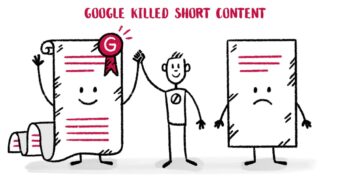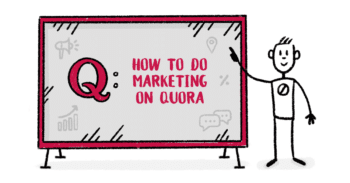How to make the most of your content marketing channels in 2023

Efficient content distribution is about working smart. In 2023, that means paying attention to how traditional SEO and blog content as we know it is becoming less effective over time.
It’s never a good idea to put all your eggs in one basket – blogs are still essential, but they can’t be at the center of your content distribution strategy anymore.
For your brand to thrive, you need an intelligent channel strategy that covers a diverse range of content distribution channels, from video and social to webinars and live conferences.
Good marketing and content distribution bring exposure to your brand, build customer trust and loyalty, and are a step toward better retention and conversion rates.
If that sounds like a lot to handle – I’ve got two words for you: content repurposing.
Here’s how you can make the most of your content distribution channels with original and repurposed content in 2023!
SEO and content marketing strategy
With Google’s continuous updates to its Search Engine Results Pages (SERP), traditional SEO optimization’s effectiveness is reducing daily. Depending on the search query, your link might have to compete with featured snippets, news stories, shopping ads, and other sponsored results.
In 2020, almost 65% of the searches in Google ended without users clicking to go to another website. This zero-click phenomenon has been on the rise, with Google directly answering questions and offering suggested related FAQs.
Changes to traditional SEO strategy and its reduced effectiveness pose a new challenge for marketing content marketing, especially if they are SEO and blog-centric. In a situation like this, it would be better for you to build and implement a hybrid strategy that involves content distribution through various content marketing channels.
Let’s hear from content marketers. Here’s what Spencer Cappelli, Content Marketing Manager at AppCues has to say about SEO as a part of content channel strategy:
“I think SEO works best as part of a larger content marketing motion. While there’s a lot to love about the cost efficiency of optimizing your website’s content for organic searchers, it’s not the only consideration when thinking about content. I think brands get the highest ROI out of the content they produce when they view SEO as just one channel for content distribution.”
So what’s the best way to implement multi-channel content distribution?
A good mix of original and repurposed content!
Effective content creation strategy in two steps
1. Create value-rich original content
Creating quality content that reduces time-to-value (TTV) for users is about knowing your target audience, being sure of your goals, and planning your content well.
Some key action steps to keep in mind are:
1. Define your target audience and establish your goals:
Know your customers and yourself! This is the essential thing you need to have clarity about your buyer personas and a direction for your content distribution.
2. If you’ve been creating content already, audit it:
Understanding what has worked for you and what hasn’t is crucial to avoid past mistakes and optimizing your future content distribution plans.
3. Do your research with competitor analysis and keywords:
Competitive research and keyword research will help you define target keywords and topic clusters that you can use to create the most valuable content for your target audience.
4. Plan out your content:
This involves brainstorming ideas using your content clusters and planning a production and content distribution strategy that works like a well-oiled machine.
Here’s a step-by-step guide that you can look at for creating a detailed content marketing plan.
2. Where the magic happens: Content repurposing
Content repurposing is about reusing your own content and presenting it in different content formats on other content distribution channels.
It’s an excellent way to ensure you’re expanding the reach and lifespan of your existing content – it helps you scale and provide value to users through different resources, in multiple content formats, and on multiple distribution channels.
Content repurposing can also give you an SEO boost – when you have content across different channels centered around similar keywords, you potentially become a source of authority in the eyes of search engines.
So how do you repurpose and publish content effectively? Here are a few simple guidelines:
Gather data on your content performance:
This will point you toward high-performing or evergreen content that you can repurpose.Choose content wisely:
The content you intend to repurpose should be value-packed, relevant, and high-performing so that you can continue to extend its relevance and importance to different target audiences.
Reshape and redistribute:
Here’s where you need to tailor the existing content to the needs of a different platform. If you’ve got a well-performing blog post, it will need to be presented differently if you are trying to create a YouTube video with it or maybe even a tweet or Instagram post.But first, you’ve got to ensure that you’re targeting the proper content distribution channels for all your content. Let’s take a look at some of the specific channels you can focus on!
Owned channels for a good content distribution strategy
Publishing content on your owned media channels should be your first priority – here’s where you can communicate directly with your target audience, and nurture leads to nudge them down the funnel.
Some of the owned channels to target are:
1. Video (YouTube)
As the internet’s second-largest search engine, YouTube is an excellent content distribution channel for your brand to reach an international audience and promote your company through visual content.
If you have a lot of blog content, long-form content, or a podcast, repurposing it into video content for YouTube is a great way to go. Blogs provide an almost-ready script to turn into a video –this works the other way around, too!
For example, here’s a blog post from InVideo on tips to film yourself that was created from their YouTube video on the same topic.
You can also share key results of your whitepapers and e-books in a video format. You can share snippets or even turn them into a video series to discuss every data point in-depth.
Biteable’s created this YouTube video to summarize their survey on The State of Video Marketing in 2021.
If you video record your podcasts or snippets, they can also be posted on YouTube.
Drift has done this with their podcast Seeking Wisdom. Check out their latest episode:
Sprout Social’s Social Media Trends for 2022 & Beyond report has shown us that consumers are turning more and more to YouTube for education and product research – so now’s a great time to take YouTube and video more seriously as a content distribution channel and as a part of your content distribution strategy.
2. Social Media
Having social media networks among your content distribution channels is an absolute must in 2023! Repurposing content for social media channels can look like a lot of things.
Depending on which social media platform you intend to target, you’ll have to repurpose it differently. You can leverage various social media platforms for cross-posting and content repurposing.
Suppose you’ve been gathering data and building reports for your brand’s domain of expertise. In that case, you can condense the findings into an infographic to be shared on your social media accounts.
Here’s an infographic from Hubspot’s Instagram that raises intrigue:

Condensing blog content into Twitter threads or shorter LinkedIn posts is also a great way to repurpose content. Check out an article by Sparktoro’s VP of Marketing as a Twitter thread:
3. Live Conferences
If you feel like your regular content strategy is getting stale, live conferences and webinars are just what you need. They’re a great distribution channel to win back the engagement and interest of your audience. And they give you a ton of content that you can repurpose later!
One great way to repurpose webinars is by turning the recordings into gated content for those who want to watch later – kind of like video-on-demand (VOD)!
Heap Analytics does this with their live events – here’s one on improving digital experiences.
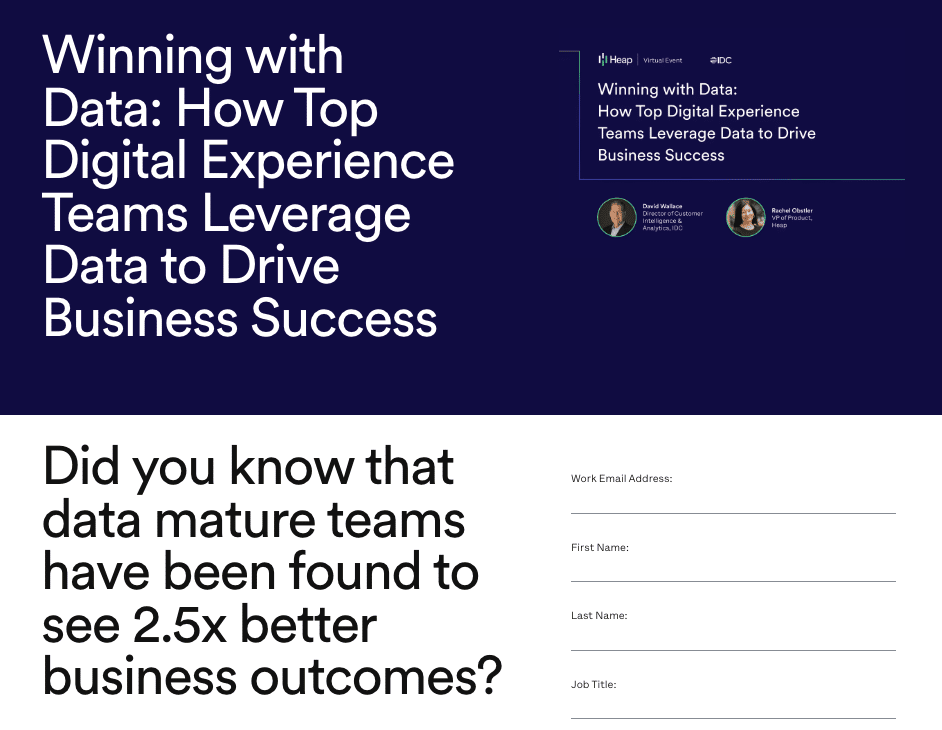
Another popular content distribution tip is to turn webinars into blog posts with video transcriptions – it’s a great way to optimize your content and gather organic traffic for your diverse target audience who want to consume the same content topic but in different formats.
Moz has a weekly live event called Whiteboard Friday, and they put up a blog post every week based on the contents of the live event!
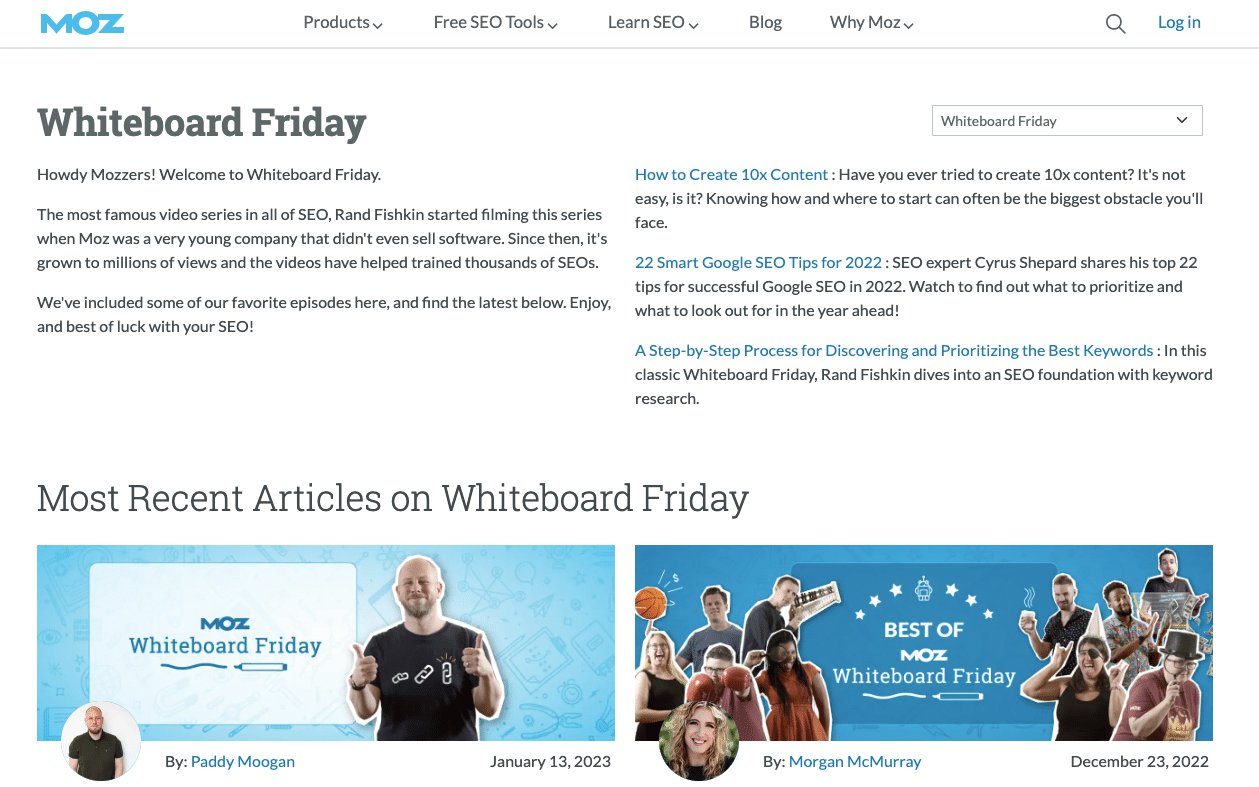
If you’ve been sleeping on live conferences, it’s time to wake up! They’re an excellent way for you to establish interest and excitement around your brand and industry expertise and make sure you have lots of content after the event that you can repurpose for months to come.
4. Gated content
The best way to get high-performing content to double as a lead-generation tool is by repurposing it into gated content.
Lorelei Trisca, Content Marketing Manager at Zavvy emphasizes the importance of gated content:
“Case studies and success stories are a kind of content that no business should disregard. These resources are a great way to show the product in action and its outcomes. As a tip, make your cases as data-driven as possible and frame them with a problem-solution-result framework.”
The simplest way is to pick up blog posts that are doing incredibly well and extend the value you’re offering by turning them into e-books with an e-mail barrier before they get access.
For instance, Whatfix published three articles on learning and development—L&D strategy, L&D challenges, and L&D trends—and packaged them into an L&D ebook.

As a bonus: if you’re collecting lots of data regularly, you can leverage this data to create a case study or a report. Whether you’re analyzing traffic performance, SEO data, social media metrics, or anything else – if you sit down with the data, it will tell a story. And that’s a story you should be sharing with users, maybe in return for lead generation through an e-mail barrier before they access it.
Sprout Social and Gong both publish extensive data reports by leveraging the data collected by their companies to establish industry expertise and authority:
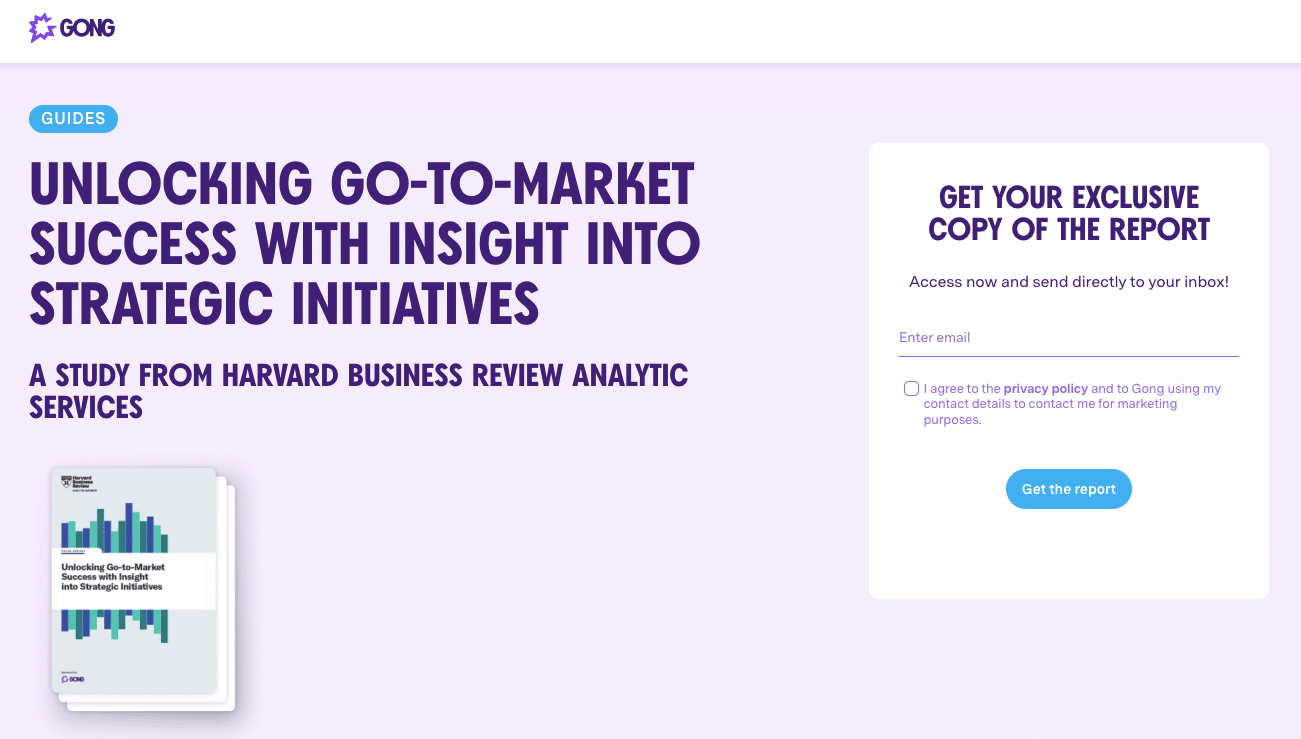
Gong’s gated content

Sprout Social’s data reports
5. Blog
If your company is running a blog, the first thing you should be doing is updating your blog posts regularly – make sure the information is current and optimize for newer SEO guidelines or keywords.
Though making your content marketing strategy blog-centric isn’t the best idea, it’s still an excellent treasure trove of website content that you can use to repurpose into media formats tailored to all your other content distribution platforms.
You can turn just a single well-performing blog post into:
A YouTube video (visual content)
A Twitter thread (social media)
An informative Instagram carousel post (social media)
A post on LinkedIn with the key takeaways (social media)
An infographic for social media channels
A guest post on another company’s blog
Email marketing
In 2023, the idea isn’t to completely turn away from blog content. The key is maintaining good published content while also deploying content distribution on a diverse range of distribution channels to increase brand awareness and offer consistent value to target audiences on every platform.
Take advantage of non-owned content distribution channels
Non-owned and paid channels are more difficult to monetize with conversions and leads, but with good channel strategy, their impact on branding is still significant. If you play your cards right, using non-owned and paid channels can generate revenue for your brand. Let’s see how:
1. Earned Media Channels
Earned media channels are a great way to build awareness, social proof, and trust around your brand if you’ve got an extensive network. This is quite an underrated content distribution channel.
Social proof: Shares, Mentions, Reviews
Sharing success stories and testimonials is one thing you can do to establish social proof and increase brand awareness. The other is getting customers to write good product reviews for you, share or mention your brand on social media or forums like Reddit and Quora, and start conversations about your brand.
Referrals are an essential part of lead generation and maximizing conversions – and getting an idea of public sentiment through positive and negative reviews and strategizing to use them in favor of your brand can up your referral traffic.
Guest posts
If you’re looking to reach new audiences, guest posts are the way to go. If you have the bandwidth, writing a guest post (blog posts, how-to guides, success stories, etc.) for a relevant site means reaching a different target audience and gaining a high-quality backlink to your website.
2. Paid channels
Paid distribution channels are the way to go if you’ve got the budget. These are likely to generate quick results for you, but this will last only as long as your investment in the channel.
Influencer marketing and sponsored content
Influencer marketing is an excellent way to draw in a new audience to learn about, use, or buy your product – through paid social media collaborations, press releases, success stories, product reviews from leading content creators in your business niche.
If you can invest in it, influencer marketing is a great way to boost traffic to your website. The only drawback is that influencer-generated content is not as sustainable as building a solid organic content strategy.
Remember that the resulting uptick in traffic will taper once your collaboration with the influencer ends. To make paid influencer content work for you, ensure that the result you expect is worth the investment.
Paid ads
Paid media is for your brand to maintain a certain level of visibility across platforms. Make sure you’re generating more organic traffic before you go for paid media in any form – whether it’s paid search campaigns, paid social media ads, or anything else.
Focus first on providing value-packed, enriching content for your target audience. Once you’ve established that, paid distribution channels and social media ads will help boost your standing. Without that, you’ll grow dependent on needing to make a continuous monetary investment for your brand to grow.
Content distribution strategy in 2023: Key takeaways
In 2023, using various content distribution channels is the way to go.
Here are a few things to remember:
SEO is always changing, and you’ve got to keep up with it to keep ranking highly.
Don’t put all your eggs in one basket: Have a wide range of content distribution channels and social media networks to ensure you’re garnering a sufficient amount of brand awareness.
Content repurposing helps you distribute your content that is evergreen and value-rich, in creative ways with wider audiences. And it saves you time.
Creating engaging content for social media platforms, video content, live conferences, and other distribution channels are the best ways to build a good content and channel strategy.
Take advantage of your non-owned channels after you’ve built a good amount of organic growth through content distribution on your owned media channels.

